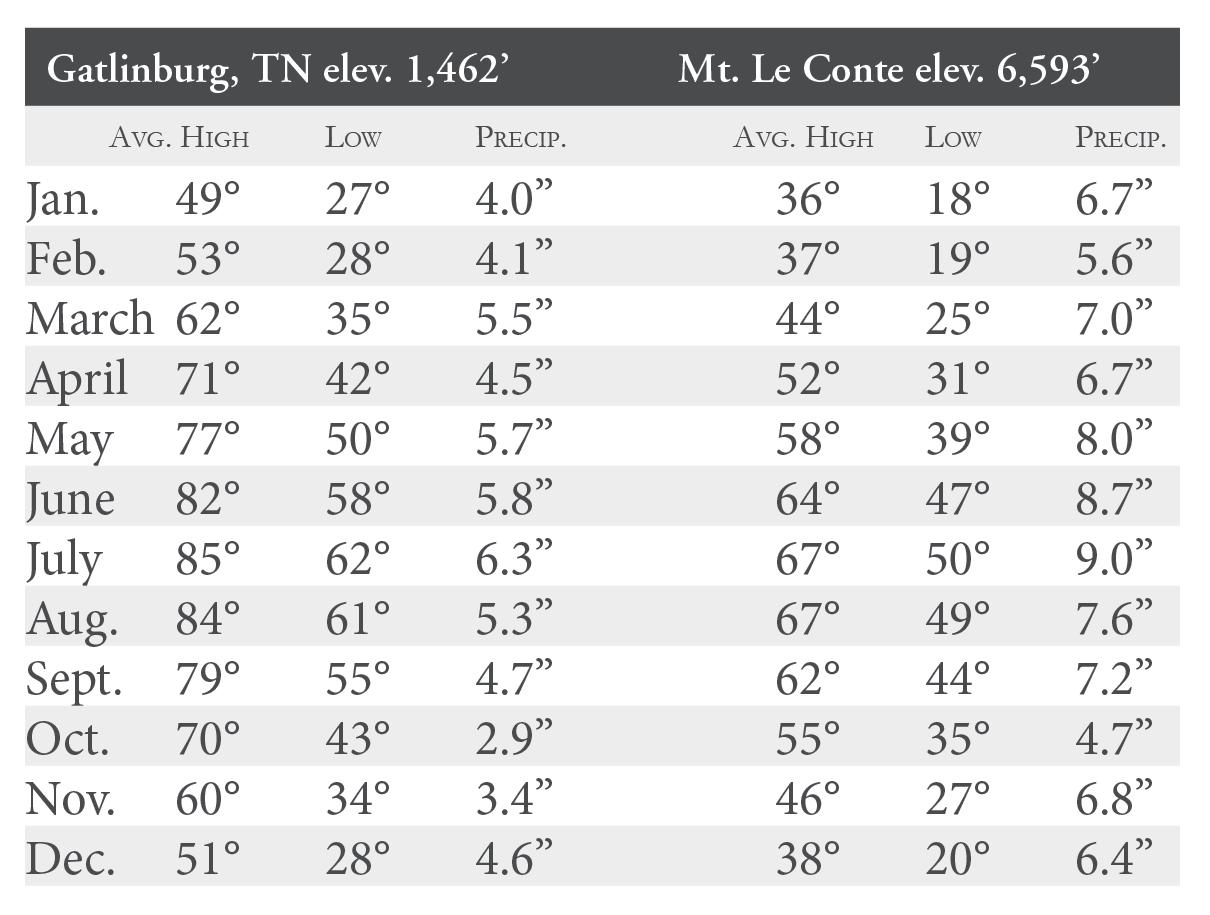State of the Park 2020 A I R Q U A LI T Y Good news Ozone pollution, acid deposition, particulate matter, visibility, and regional haze levels in the park have all improved dramatically since the late 1990s thanks to cleaner power plants and motor vehicles. Bad news Because of sulfur and nitrogen air pollution, park rainfall is five times more acidic than natural rainfall, causing some park streams to become too acidic to meet Clean Water Act standards. On a few days each year, ground-level ozone pollution and particulate matter can make air in the park unhealthy to breathe. This is also impacting streams, soils, vegetation, and ecosystems.
H I STO R I C PR E S E R V ATI O N
PL A N T LI F E
Good news Work continued on Elkmont area cabins and the Noah “Bud” Ogle Cabin, including repairs to the damaged chimney and addressing drainage around the foundation. Resource management and science staff have developed an interdisciplinary program for preserving historic cemeteries and commenced work at test sites.
Good news Park forestry staff continued to save trees by treating 30,000 hemlocks and 384 ash trees for non-native hemlock woolly adelgid and emerald ash borer. Preserving these tree species greatly enhances ecological integrity, natural scenery, and visitor safety in high-use areas.
Bad news The park’s historic structures and rock walls are being permanently damaged by vandals carving or writing their names on them. If you witness vandalism, please call 865.436.1230 to report it.
Bad news Destructive non-native gypsy moths were caught in three of the 60 traps deployed by park forestry staff. Some uninformed park campers continue to bring firewood that is not heat-treated and thus likely to introduce new forest insects and diseases to the park.
W I LD LI F E
V I S I TO R E X PE R I E N CE
STR E A M LI F E
Good news A collaborative project to accurately estimate elk populations is going well and now entering its second year. Wildlife staff are working with bear biologists throughout the Southeast to educate people on how to live responsibly with black bears. Check it out at bearwise.org.
Good news Deep Creek received a muchneeded pavement preservation treatment, improving access to the campground, picnic area, and trailheads. The park’s Trails Forever crew completed a two-year trail rehabilitation of the popular Trillium Gap Trail. The experience is now safer for visitors and more sustainable for future users!
Good news Stream acidity in mid- to low-elevation streams has improved moderately thanks to reductions in acid rain. Greenside Darters introduced into lower Abrams Creek are thriving and should help native mussel reproduction over time. Aquatic insect populations, which are good indicators of stream health, generally remained diverse and abundant.
Bad news Bears continued to travel outside the park into areas with unsecured garbage and human-related food. Park bat populations remain low after being decimated by whitenose syndrome. Although elk populations continue to expand, several adult elk have died this year as a result of vehicle collisions. This should serve as a reminder to obey park speed limits and keep alert for wildlife along roadways at all times.
Bad news Increasing congestion at some of the most popular destinations created challenges for visitors including long wait times for restrooms, lack of available parking, and heavy traffic. To help prevent congestion, visitors are reminded to consider less-traveled trails or roads and to plan their visits during mid-week and early mornings.
Smokies Guide Winter 2020–21 • 4
Bad news Twelve park streams (41 miles) remain officially listed as impaired by acid deposition. Water quality improvements are occurring very slowly in high-elevation streams because soils there are saturated with decades of acids from airborne pollutants. Research indicates it will take more than 60 years for most of the park’s sensitive streams to recover.



